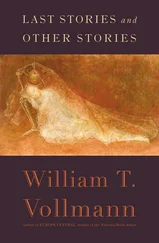In the performance which I now describe, the face was much whiter.
Semimaru stares sightlessly at her from his cage while she sings on the bridge. Precisely when he becomes aware of her we cannot tell; we have already heard Zeami define fascination as a sensation experienced prior to the consciousness of the sensation, and no doubt understatement is nicely conducive of such effects. When a Noh mask gazes at me just after its embodiment has crossed the pine tree bridge into my world, or when a woman whom I feel for studies me and I do not know what she will do, then I most certainly tend to be fascinated. Semimaru, of course, is not a person at all, but the representation of certain aspects of regal patience, poesy, filial loyalty, disempowerment and death. But because it is my nature to want to kiss the mask, invading it with my passion and my belief, I wonder all the same just when he senses the presence of his sister? 5He wonders aloud if it is Hakuga no Sammi whom he hears. Sightlessly he gazes at the rainbow curtain from behind which she came and behind which she will go. She arrives on our side of the bridge, glides and whirls about (in decorous Noh stillness, of course), then raises her branch and begins fencing with it. The white mask leans forward at the very edge of the stage as if the madwoman it portrays will let herself fall off into the dry moat of white stones. It dances almost all the way back across the bridge — a rare sight, which I recall seeing before only in a Komachi play — and slowly returns. It comes and goes. It is the shite Sakagami, 6played by Kanze Kiyokazu. Like her brother, Sakagami has been cast out. The rainbow curtain will not rise for her, but she stares at it for a long time. And this is what I remember most from that slow sad performance: the eerily smiling mask of the crazed sister.
Finally Semimaru begins to sing from his cage, the shining sister frozen on the bridge, holding her green branch, gazing away.
When they meet, they each kneel, facing one another, each echoing the hand and face gestures of the other.
He cannot see her grace, which she herself may well be barred by her insanity from knowing. And so her beauty is a gift to us alone, to us, the audience, who do not exist. And this is “Semimaru”: the transient conjunction of two loving and damaged attachments. Grace is a branch of flowers; flowers die.
The chorus sings out the turn their lives have made: from jade pavilions to straw mats and rattling doors. What finally happened to Komachi in possible retribution for her cruelty to Fukakusa no Shoso has struck these two in their youth, and they suppose that perhaps they, too, are being punished for misdeameanors committed in their previous incarnations. But although at the play’s beginning Semimaru bravely insisted to the Imperial messenger who left him in the wilderness that his father has treated him lovingly in expiating his karmic burden, we can scarcely celebrate the Emperor’s kindness. “Denied the moon,” chants the chorus, “in a straw hovel that closes out even the sound of rain, day or night, my mind runs on grief and misery.”
The two masked exiles sit very still on the stage, not quite side by side, gazing out at us that we might contemplate them.
A long chant endures. Semimaru gazes down, wearing his tall bishoplike hat; the sister likewise gazes down, half smiling.
Why must she go away? One might as well ask why flowers must die. The chorus informs us that he longs for her black hair.
The play approaches its end. Semimaru bows in agony, outstretching his grey sleeves as the lovely mask of Sakagami vanishes forever behind the rainbow curtain.
WILD GRASSES
I will never forget a performance of “Sumidagawa” which I saw in the Kawamura Theater in Kyoto in 2004.
The chorus traverses the long bridge with nearly unseemly casualness. Then two assistants come, bringing a large green-curtained box draped with greenery. They carefully position it. The flute begins to shrill. From the unknowable realm on the far side of the bridge creeps a man on his knees, or so it seems, for behind his heels stretch two long tails of his crested, wave-patterned robe. His head is cropped. He begins to sing, his ageing face staring straight into space. He is the waki , the boatman of Sumida River. Then he reaches his position and stops in it, gazing away from everything. Silence falls. Then the chorus howls: “ Yooooooooooo — oooooo .”
A merchant traveller appears in this world. A madwoman comes behind them. The merchant and the ferryman agree to wait for her, so that her ravings may entertain them. When we see her face, we may well find her in a certain brooding Edo period fukai mask, which has flatter cheeks than the ko-omote but is still smoothskinned excepting the dimple-like wrinkles around the mouth. Her forehead and chin project slightly forward. The corners of the mouth do not turn upward like a ko-omote ’s; and the eyebrows are thicker. This mask is often used for a mother who has lost her child or, as we know, for a lonely wife, for instance in “Kinuta,” and indeed we are now informed, mostly by the chorus, that her son was stolen away by slave-traders from the east, and that she has lost her way while searching for him.
The golden mist-patterns of the fan she holds, at least when this play is performed by the Hosho School, are indicative of strength; and so I see her as desperate but not yet broken by despair.
And so they begin to cross the Sumida River, where long, long ago the nameless young gallant of the Tales of Ise declaimed a sad poem about his lady back in Kyoto, center of the world — a poem which made everyone weep. Yes, they cross the abyss; they cross the river, whose various floating, swimming and sinking lives, of course, are far too self-absorbed to be much moved by her concerns. For instance, a faded picture scroll of “Sumida in Autumn” by Chobunsai Eishi depicts passengers on a boat admiring the moon. There are faint torii in the distance. And in a woodblock by Isoda Koryusai, circa 1770, we see a man and a courtesan seated on a veranda overlooking the pale-green-inked Sumida River, on which a fishing boat rests, one fellow in the act of poling, the other drawing up his net; and on the far side, small figures, some of children, wander across the street-plain of Edo beneath what might be the “gazing-back willow,” the spot where this courtesan’s customer may well stand tomorrow, looking back across the river into Yoshiwara and perhaps even seeing the same lady who now leans on her elegantly sleeved elbow, facing the river, her eyes closed as the man drapes her white leg over his shoulder, entering her oysterlike vulva with an organ whose many parallel wrinkles, especially in the testicles, recall the rocky mountains of traditional Chinese painting.
Soon the crossing will be completed. Already they can see on the far bank a crowd around a willow tree. The mother asks what they are doing, and the ferryman answers that they are marking the first anniversary of a child’s death. The child was, of course, her son, whom the kidnapper cast away when he became weak.
In 2005 I visited this spot. The Buddhist temple to the child, Umewaka, was destroyed in 1870; a Shinto temple replaced it. The building was saved by chance from Allied air raids. One can see a few black-ringed bullet-holes. In an apartment complex, the stele’s eight characters — three small, five large — descend within a niche of concrete wall to two geranium planters side by side, and then the shrine itself, a nondescript modern glass-and-steel cupola (which fire regulations require) enclosing the old fish-scale gable roof.
The young boy lost his father early, we read, and was deceived by kidnappers. He sickened and died at age twelve. A priest was moved by his deathbed poem, and accordingly erected this stele, planting beside it a willow tree, whose Japanese name is umewaka . (A young plum is a waka-ume .)
Читать дальше












